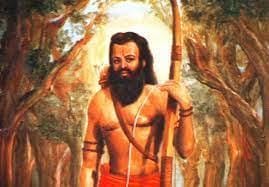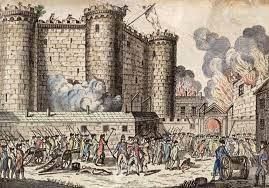History, Art & Culture - 1 | Current Affairs & Hindu Analysis: Daily, Weekly & Monthly - UPSC PDF Download
| Table of contents |

|
| Mihir Bhoj |

|
| Sri Alluri Sitarama Raju |

|

|
|
| Bastille Day And French Revolution (1789-1815) |

|
| Tankai Shipbuilding Method |

|
| Kui Language |

|
| Sri Aurobindo Ghosh |

|
Mihir Bhoj
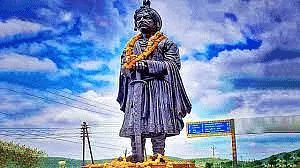
Controversy has erupted in Haryana regarding the inauguration of a statue associated with Mihir Bhoj.
Who was Mihir Bhoj?
Mihir Bhoj was a king from the Gurjar Pratiharas, a prominent medieval Indian dynasty that existed in the 19th century.
Significance of Mihir Bhoj:
- Mihir Bhoj gained prominence for his achievements in the tripartite struggle for Kannauj, a significant city in northern India during that era. The struggle involved three competing powers seeking control over Kannauj:
- Gurjara-Pratihara: Mihir Bhoj's own dynasty, which he represented.
- Rashtrakutas of Deccan: A powerful dynasty ruling over the Deccan region of India.
- Palas of Bengal: Another influential dynasty ruling over Bengal.
Mihir Bhoj’s Conquests:
- During his reign, Mihir Bhoj accomplished several conquests and expanded his territory:
- He captured Gujarat and Malwa from the Gujarat-Rashtrakutas, incorporating these regions into his kingdom.
- Additionally, he acquired territories in Gorakhpur from the Palas, further solidifying his dominion.
Geographic Reach of Mihir Bhoj’s Rule:
- Mihir Bhoj’s influence extended from Kashmir in the north to Gujarat in the west.
- He conquered and governed areas in the Deccan and Malwa regions, demonstrating the extensive reach of his rule.
Timeline of Mihir Bhoj’s Reign:
- Mihir Bhoj ruled from 836 CE to 885 CE.
Sri Alluri Sitarama Raju
During the concluding ceremony of the 125th birth anniversary celebrations of freedom fighter Alluri Sitarama Raju in Hyderabad, President Draupadi Murmu paid tribute to him. The President emphasized the importance of Raju's efforts in fighting against injustice and exploitation during India's struggle for freedom.
Alluri Sitarama Raju
- Raju is thought to have been born in 1897 or 1898 in Andhra Pradesh.
- Embarking on a spiritual journey, he embraced asceticism at the age of 18, earning a mystical reputation among hill and tribal communities for his austerity, knowledge of astrology and medicine, and his ability to tame wild animals.
Revolutionary Activities
- Raju effectively harnessed the discontent of hill people in Ganjam, Visakhapatnam, and Godavari, organizing guerrilla resistance against the British.
- The Forest Act of 1882 and other colonial policies posed threats to the traditional podu cultivation of tribals, compelling them into forced labor.
- In August 1922, tribals and muttadars (village headmen), impacted by the reduction of their powers by the British government, united in armed resistance against colonial rule.
Contribution to the Freedom Struggle
- Raju's guerrilla warfare, known as the Rampa or Manyam Rebellion, persisted until May 1924.
- Coinciding with Mahatma Gandhi’s Non-Cooperation Movement, the rebellion unfolded.
- Despite admiring Gandhi and endorsing his ideas of wearing khadi (homespun cloth) and abstaining from alcohol, Raju maintained a belief that India could only achieve liberation through the use of force, diverging from Gandhi’s principle of non-violence.
Capture and Execution
- Raju’s resistance came to an end when he was captured by the British in May 1924.
- He was executed for his involvement in the rebellion.
- Raju became known as the ‘Manyam Veerudu’ or Hero of the Jungle, and his efforts are remembered as a significant contribution to India’s freedom struggle.
Conclusion
Overall, Alluri Sitharama Raju played a crucial role in leading a guerrilla resistance against British colonial rule, fighting for the rights of tribal communities, and advocating for India’s independence through forceful means.
Bastille Day And French Revolution (1789-1815)
On the 14th of July, Prime Minister Narendra Modi is scheduled to visit France to participate as the Guest of Honour in this year's Bastille Day Parade in Paris.
What is France's Bastille Day parade?
- France's Bastille Day Parade is a significant event observed on July 14, marking the country's National Day. Originating from the storming of the Bastille on July 14, 1789, this day is commemorated with a blend of solemn military parades, lively dancing, and vibrant fireworks.
- The celebration takes place on Paris' renowned avenue des Champs-Elysées, featuring a military parade akin to India's Republic Day parade on Kartavya Path. Notably, Prime Minister Narendra Modi is set to be the second Indian PM to serve as the guest of honour at Bastille Day, following Manmohan Singh in 2009.
Tankai Shipbuilding Method

The Ministry of Culture and the Indian Navy have recently entered into a Memorandum of Understanding (MoU) to rejuvenate ancient stitched shipbuilding techniques.
About Stitched Shipbuilding Method (Tankai method)
- The Stitched Shipbuilding Method, also known as the Tankai method, is a 2000-year-old shipbuilding technique that involves stitching wooden planks together instead of using nails.
- This method provides ships with flexibility and durability, making them less vulnerable to damage from shoals and sandbars.
- Although European ships introduced different shipbuilding techniques, the tradition of stitching ships has endured in certain coastal regions of India, particularly for small local fishing boats.
About the Project
- The Indian Navy will oversee the entire project, ensuring effective implementation and execution. Its involvement guarantees seamless project management, adhering to the highest standards of safety and precision.
Significance of the Project:
- Reviving and Preserving Art: The project aims to revive and preserve this ancient shipbuilding technique as part of India's cultural heritage for future generations.
- Promoting Craftsmanship: By leveraging the expertise of remaining traditional shipwrights in India, the project seeks to showcase their exceptional craftsmanship.
Reviving Ancient Trade Links: The project intends to explore historical interactions across the Indian Ocean, uncovering insights into the flow of Indian culture, knowledge systems, traditions, technologies, and ideas. This will be achieved by sailing along ancient maritime routes using traditional navigational techniques.
- Cultural Pride: The project aspires to instill a sense of pride in India's rich maritime heritage among its citizens.
Kui Language
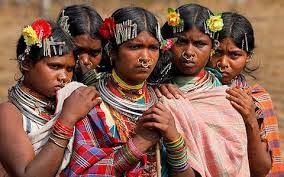
The Odisha Cabinet has recently endorsed a proposal to include the 'Kui' language in the 8th Schedule of the Indian Constitution.
About the Kui Language:
- Kui, also known as Kandh, Khondi, Khond, Khondo, is a South-Eastern Dravidian language spoken by the Kandha community. Its primary usage is in the state of Odisha. It shares close linguistic ties with other Dravidian languages like Gondi and Kuvi and was historically referred to as the Kuinga language.
- According to the 1991 Indian census, it ranks 29th with 941,988 registered native speakers. The traditional script for Kui is the Odia script, which is also employed for writing the Odia language.
8th Schedule of the Indian Constitution:
- The 8th Schedule enumerates the official languages of India. Despite the multitude of languages spoken across the country, the eighth schedule officially acknowledges a total of 22 languages as the official languages.
- The languages now included in the eighth section of the Constitution are Manipuri, Maithili, Kashmiri, Hindi, Kannada, Gujarati, Konkani, Malayalam, Assamese, Marathi, Nepali, Bengali, Punjabi, Sanskrit, Sindhi, Telugu, Tamil, Odia, Urdu, Bodo, Dogri, and Santhali.
Originally, 14 languages were listed in the Constitution. Sindhi was added in 1967, followed by Konkani, Manipuri, and Nepali in 1992, and Santali, Dogri, Maithili, and Bodo through the 92nd Amendment Act of 2003.
Sri Aurobindo Ghosh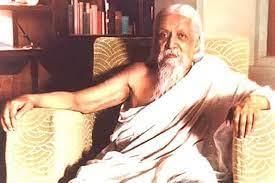
Context:
Prime Minister Narendra Modi is set to engage in a program dedicated to commemorating the 150th birth anniversary of Sri Aurobindo on December 13, 2022. In the course of the program, the Prime Minister will unveil a commemorative coin and postal stamp as a tribute to Sri Aurobindo.
About Sri Aurobindo Ghosh:
Early Life & Career:
- Born on August 15, 1872, in Calcutta to surgeon Krishna Dhan Ghose and Swarnalata Devi.
- Although he passed the Indian Civil Service Examination in 1890, his failure in the horsemanship test prevented him from entering the service.
- In 1893, he accepted a position in the Baroda state service, where he worked for 13 years and eventually became the principal of the Baroda State College.
- Later, he left his job at Baroda to join the Bengal National College.
Revolutionary Streak:
- Emerging as a prominent figure in the freedom movement, Sri Aurobindo wrote fearless articles for the English newspaper Bande Mataram.
- He also contributed to the Bengali weekly Yugantar and initiated the weekly English journal Dharma, aiming to convey the message of Swaraj or freedom from British rule.
- As one of the founders of the youth club Anushilan Samiti, he protested against British atrocities.
- A vocal opponent of the 1905 Partition of Bengal, Sri Aurobindo urged citizens to boycott British institutions and goods.
- He participated in the 1906 session of the Indian National Congress, contributing to the formulation of four objectives: Swadeshi, Swaraj, education, and boycott.
Alipore Bomb Case:
- Sri Aurobindo, known for his revolutionary and militant nationalism, faced charges in the Alipore Bomb Case (1906-1910) and received a jail sentence.
- During his imprisonment, he spent a year in solitary confinement at the Alipore Central Jail in Calcutta.
- Deshbandhu Chittaranjan Das fought his case, leading to Sri Aurobindo's release.
Spiritualism at Puducherry:
- He decided to give up active politics after his stint in jail and devoted himself to spiritualism.
- In 1910, he left British India and found refuge in the French colony of Pondichéry (now called 'Puducherry') in southeastern India.
- He founded a community of spiritual seekers, which took shape as the Sri Aurobindo Ashram in 1926.
- He devoted himself for the rest of his life to the development of his “integral” yoga.
- The main objective of his teachings was to increase the level of consciousness of people and to aware people of their true selves.
Work:
- Aurobindo’s voluminous literary work comprises philosophical speculation, many treatises on yoga and integral yoga, poetry, plays, and other writings.
His major works include:
- Essays on the Gita (1922),
- The Life Divine (1939)
- Collected Poems and Plays (1942),
- The Synthesis of Yoga (1948),
- The Human Cycle (1949),
- The Ideal of Human Unity (1949),
- Savitri: A Legend and a Symbol (1950),
- On the Veda (1956).
|
38 videos|5288 docs|1117 tests
|
FAQs on History, Art & Culture - 1 - Current Affairs & Hindu Analysis: Daily, Weekly & Monthly - UPSC
| 1. Who was Mihir Bhoj? |  |
| 2. What is the significance of Sri Alluri Sitarama Raju? |  |
| 3. How did the Bastille Day contribute to the French Revolution? |  |
| 4. What was the Tankai Shipbuilding Method? |  |
| 5. What is the Kui language? |  |

